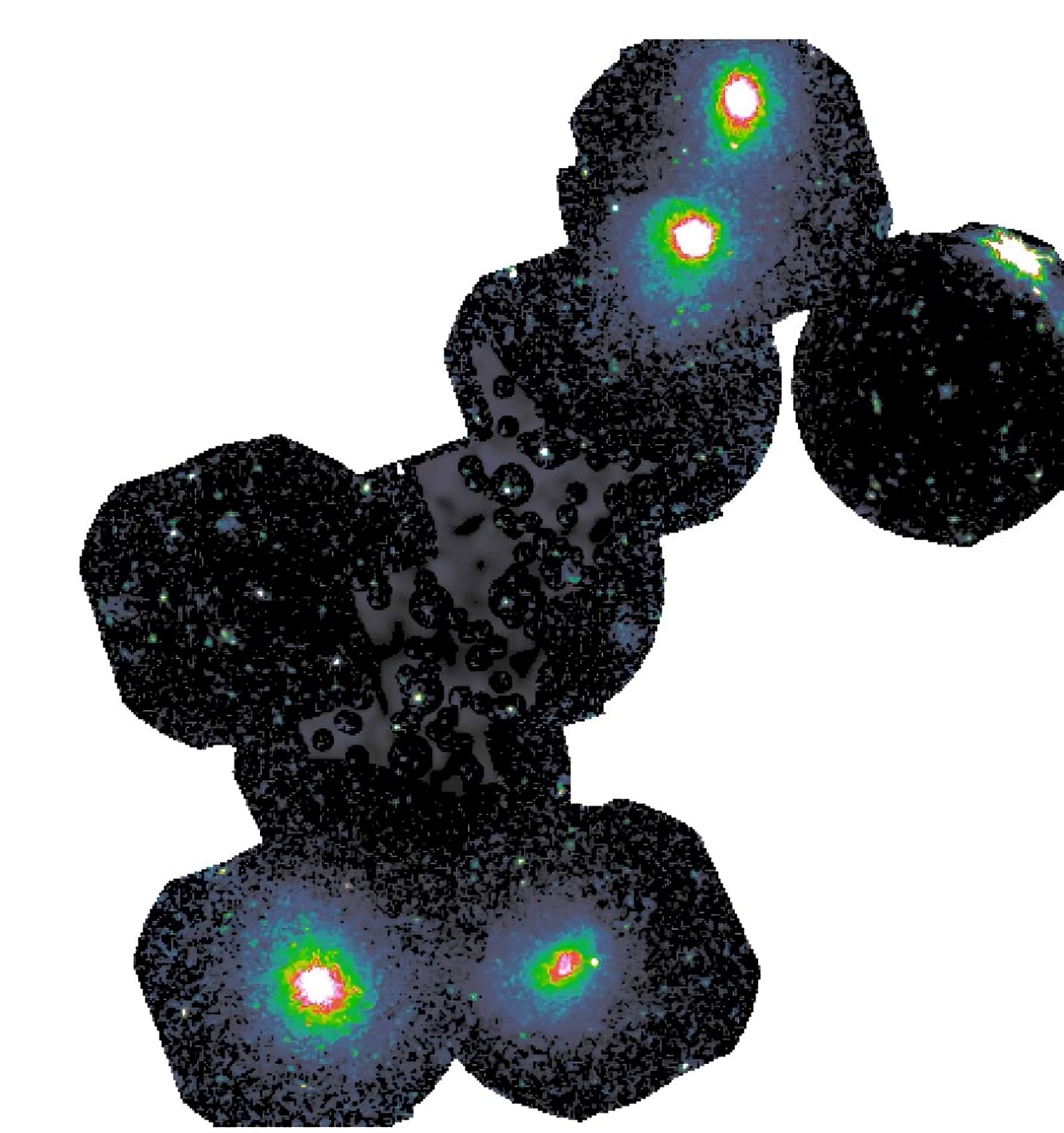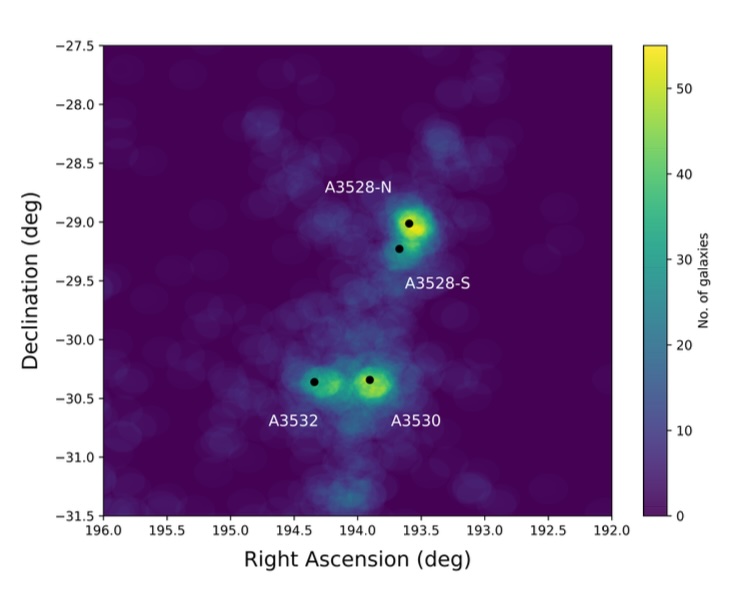Follow us on Google News (click on ☆)
For the first time, spectroscopic analysis confirms that this filament contains warm-hot intergalactic medium (WHIM) which constitutes part of the "missing" ordinary matter predicted by the standard cosmological model but never previously detected in an individual filament.

The filament between two galaxy clusters (top and bottom of image) observed by the Suzaku (JAXA) and XMM-Newton (ESA) X-ray telescopes. The filament's gas appears as brighter regions at the image center. The "holes" in the filament are observational artifacts: these locations contain black holes (bright spots) not part of the filament. Their X-ray emission is subtracted from the filament.
© Migkas et al.
For decades, cosmologists have puzzled over the whereabouts of about half the Universe's ordinary matter, which theoretical models predict should exist as hot gas in cosmic filaments. However, direct detection proved extremely difficult due to its faint luminosity and potential contamination from other X-ray sources.
The team focused on an exceptional filament connecting four clusters in the Shapley Supercluster: A3532 and A3530 on one side, A3528-N and A3528-S on the other. The observational strategy combined the complementary strengths of the Suzaku X-ray space telescope - capable of detecting very faint sources despite limited spatial resolution - and XMM-Newton - less sensitive to extended structures but able to precisely locate point sources like supermassive black holes.
The latter were systematically subtracted from measurements to isolate the filament's signal. Scientists detected a 21% X-ray excess in the filament region compared to cosmic background radiation.
The filament between two galaxy clusters observed by the Suzaku X-ray telescope
Results reveal a filament composed mainly of free electrons and protons at 11.6 million Kelvin, with density ten times higher than standard intergalactic medium. Its colossal mass of 10¹³ solar masses equals one hundred times that of the Milky Way. This filament belongs to the Shapley Supercluster, one of the largest structures in the nearby Universe located 650-750 million light-years away in the Centaurus constellation, containing over 10,000 galaxies.
"This is truly a mini-Universe consisting of more than 30 galaxy clusters connected by a complex filament network," explains Nabila Aghanim, CNRS research director who mapped this supercluster's 3D structure in the ERC ByoPiC project.

Observations of the filament between galaxy clusters in the Shapley Supercluster. Yellow areas show two pairs of galaxy clusters, each containing hundreds of galaxies. Between clusters, increased galaxy density reveals the filament against the sky background.
© Migkas et al
Optical data revealed the filament is diagonally oriented relative to us - crucial information for accurately determining its total volume and contained gas density. This discovery spectacularly validates cosmological predictions and opens new avenues for locating missing matter in the Universe.
"We had detected hot gas by stacking thousands of filaments, but determining its physical properties was challenging," notes the French scientist. Now, precise WHIM characterization in an individual filament marks a decisive step in understanding large-scale cosmic architecture.